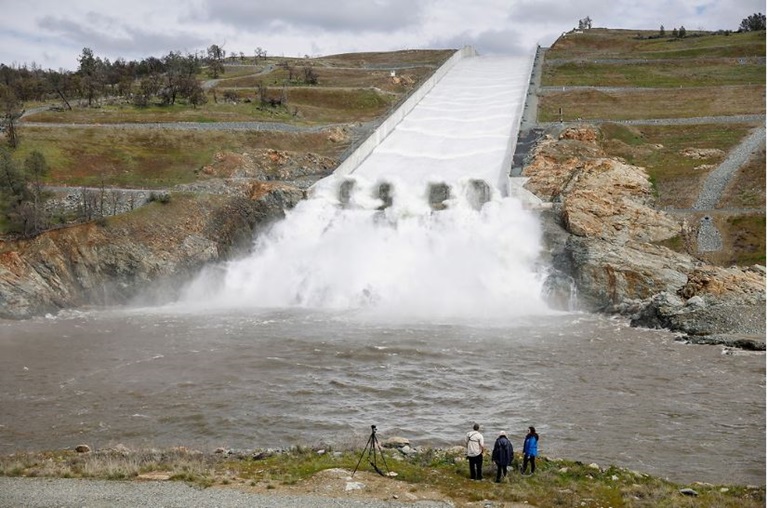Update on Lake Oroville Operations - March 15, 2023
Spectators watch as DWR begins the water release from 4,000 cubic feet per second (cfs) to 8,000 cfs from the Lake Oroville flood control gates down the main spillway and over the four energy dissipator blocks for the first time since April of 2019 in Butte County. Photo taken March 10, 2023.
The Department of Water Resources (DWR) is increasing flood control protection releases to the Feather River today due to heavy inflows into Lake Oroville. Total releases to the Feather River increased to 20,000 cubic feet per second (cfs) at noon today, with 8,000 cfs flowing through the low-flow channel within the City of Oroville.
Since Dec. 1, Lake Oroville has gained approximately 193 feet in elevation and 1.86 million acre-feet of water. DWR will continue to adjust releases based on U.S. Army Corps of Engineering guidelines for flood control storage at Lake Oroville.
The information below reflects current reservoir level estimates. Forecasts can change quickly and may affect the estimates provided.
- Current Oroville Reservoir Level: 851 feet elevation
- Total Releases to the Feather River: 20,000 cfs; will increase to 25,000 cfs Thursday
The Lake Oroville reservoir is the largest storage facility in the State Water Project and supports environmental and water delivery needs to 27 million Californians and reduces flood risks to downstream communities. DWR continues to monitor lake levels, weather forecasts, and mountain snow levels to optimize operations for flood control, water storage and environmental protection while allowing for carryover storage into next year.
